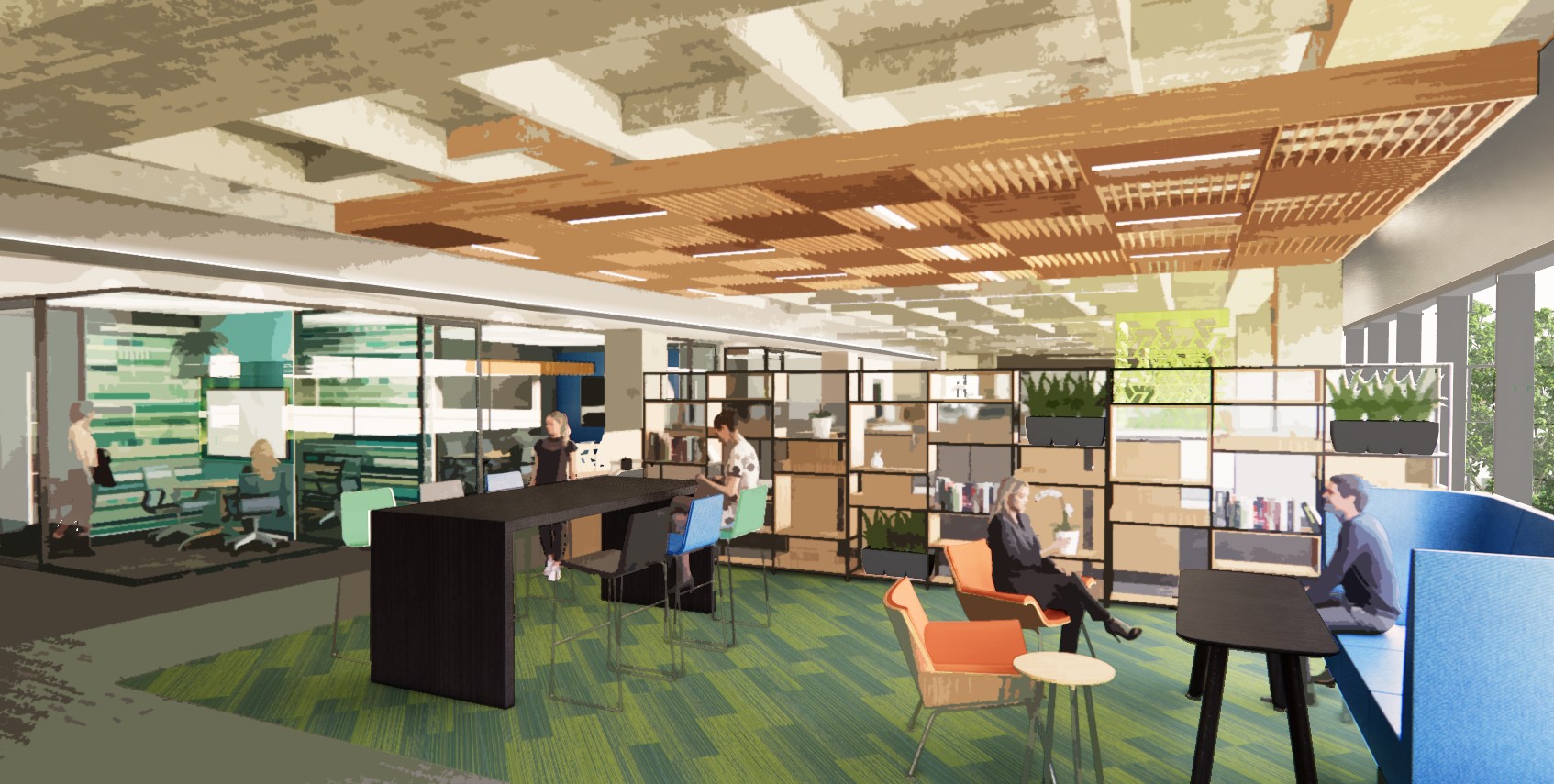In this launch workplace-related series, I will examine the purpose of place through the lens of a hybrid workplace and the importance of designing physical environments that rebuild safety and trust for employees. We are all familiar with hybrid cars, hybrid learning, even hybrid breeds, and hybrid vegetables. And now the hybrid workplace. A model that is a likely inevitability for many organizations – those whose business operations, business success, and culture demand it – as they prepare to welcome their workforce back to the office.

The hybrid workplace is a blended model comprised of onsite, sometimes onsite, and offsite employees. In its complexity, this blend will vary by organization and will require a tailored design approach.
Without proven benchmarks for square footage per person onsite, as the blends will vary, each solution and space ratios will be unique. According to McKinsey Global Institute1, the potential for remote work in the U.S., specific to activities the can be effectively performed remotely, are 1 day per week for 61 percent of the workforce, 17 percent at 1-2 days per week, and 22 percent at 3-5 days per week. This model, based on 2,000 activities across 800 occupations, largely aligns with a desire for choice via a blended schedule – to work remotely at least some of the time. Even one to two remote days per week for most of us may satisfy our need for flexibility and should comply with the feasibility of accomplishing productive work.
This research will not apply across the board for all organization types and, like the design approach, must be data driven and tailored.
To be successful, we advise and assist each of our clients in their own productivity research. This data is critical to facilitate a tailored approach to their space design and assure productivity of their workforce.
Further in its complexity, the hybrid workplace can be a recipe for organizational success when we examine the purpose of workplace, the spaces within it, and the purpose of companion places, i.e., home, car, or wherever one has access to Wi-Fi and can turn on custom Zoom backgrounds.
This new generation workplace, with its varying degrees of dedensification, must accomplish a few basic goals. One, it must meet new health and safety guidelines – the new workplace experience is first and foremost one of safety, critical to rebuilding trust.
Two, a large part of that safety, aside from maintenance protocols assumed in place, is to provide a choice of space types. The concept of choices of work settings, or space types, is not new. We have known that a variety of settings facilitate interactions and contribute to speed of communication and lead to innovation.
Now, we know that choices will give people control over their experiences, enable, and promote the perceptions and realities of safety. Amenity spaces have well-served as alternate work settings, but now must provide control and promote safety. They are no longer sprinkled in just for amenities’ sake. A lounge space fit out with cushy textured sofas and fuzzy pillows will not contribute to the perception of safety, as it will not be perceived as clean by most people.
Three, given the blended nature of an onsite, sometimes onsite, and an offsite workforce, enabling communications and communication technologies is key.
The hybrid workplace must also solve for emotional and long-term psychological effects of the last several months. This workplace design can, and must, remediate key issues that have arisen from isolation, lack of team interaction, limited connection to organizational culture, strained access to leadership and mentorship.
Rebuilding trust and safety through the design of the physical environment is the new goal for design professionals, as we continue to advise our clients on their workplace in the months ahead.
Part two of the Purpose of Place series will focus on meeting spaces.
1Source: McKinsey Global Institute analysis
